This year marks the 25th anniversary of the release of The Lost World: Jurassic Park. With the release of Jurassic World Dominion, it seemed like a good opportunity to take a look back at Steven Spielberg’s sequel to Jurassic Park.
The Lost World is a somewhat maligned sequel, including by Spielberg himself. “My sequels aren’t as good as my originals because I go onto every sequel I’ve made and I’m too confident,” he confessed in May 2016. “This movie made a ka-zillion dollars, which justifies the sequel, so I come in like it’s going to be a slam dunk and I wind up making an inferior movie to the one before. I’m talking about The Lost World and Jurassic Park.”
Then again, Spielberg didn’t particularly like Jurassic Park. “I didn’t think it was a perfect film,” he stated of the original. “Among the films that I really think are good movies that I’ve directed, it’s not even in the top five.” This may explain why Spielberg didn’t seem particularly precious about making a sequel to Jurassic Park in the first place. After all, to Spielberg, Jurassic Park had been an effort to make “a good sequel to Jaws, on land.”
Contemporary reviews were divided on The Lost World. Most of the criticisms focused on the brutality and horror of the film. Chris Hicks complained that the film had “no warmth.” Peter Travers described it as “sadistic.” Marc Savlov noted its “gory black humor.” In a mostly positive review, Stephen Holden noted, “Although the actual gore is minimal, it is scarier than Jurassic Park, the body count is higher, and the overall mood dark. Young children are likely to be terrified.”
There was something just a little transgressive in all of this, particularly for a director who had cultivated a reputation for wholesomeness and sincerity. “Sentimentality, that’s my tattoo,” Spielberg complained in an interview a few years earlier. “It’s like the media have tattooed sentimentality on my forearm and now I can’t get rid of it.” Indeed, Kenneth Turan had complained that even the original Jurassic Park reeked “of suitable-for-children sentimentality.”
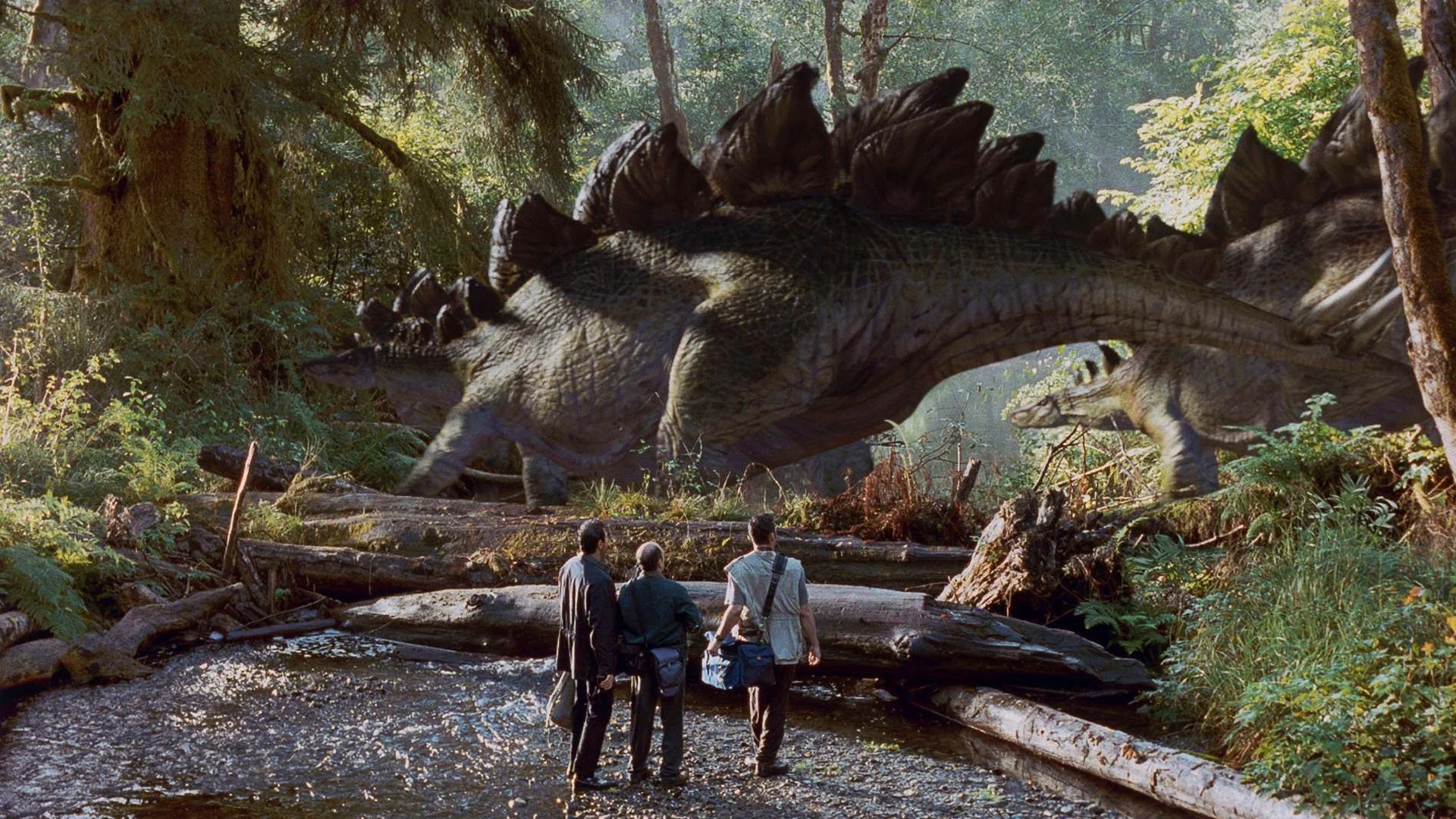
The Lost World wasn’t the first time that critics attacked Spielberg for subverting his own reputation for wholesomeness. Many of the same criticisms were leveled at Spielberg’s previous sequel, Indiana Jones and the Temple of Doom, with People describing it as an “astonishing violation of the trust people have in Spielberg and Lucas’ essentially good-natured approach to movies intended primarily for kids.” Spielberg would later admit that he “wasn’t happy” with that film at all.
The Lost World is a nasty piece of work from the outset, in which a young girl named Cathy (Camilla Belle) wanders away from her parents and is savagely attacked by seemingly cute dinosaurs. Later in the movie, John Hammond (Richard Attenborough) dismissively assures Ian Malcolm (Jeff Goldblum) that “She’s fine! She’s fine!” but the scene doesn’t play that way, cutting away from the horrified scream of Cathy’s mother, Deirdre (Cyndi Strittmatter).
There are relatively few rules when it comes to blockbuster filmmaking, but avoiding victimizing children on screen is one of them. As such, it feels pointed that Spielberg opens The Lost World by having his dinosaurs attack an innocent young girl. This is closely related to another unspoken rule of major Hollywood filmmaking, what Martin McDonagh calls “rule number one”: you can’t harm dogs. Naturally, Spielberg breaks that one as well by having a T. Rex devour a family’s pet dog.
This nastiness runs through The Lost World. In hindsight, Jurassic Park was a surprisingly tame film. Early in The Lost World, Malcolm emphasizes this by blaming InGen for the deaths of “three people,” perhaps discounting Nedry (Wayne Knight) and the anonymous handler whose death prompts the trip to the island. Blood flows a lot more freely in The Lost World, which goes out of its way to introduce an entire ensemble of unlikeable characters to serve as food for the dinosaurs.
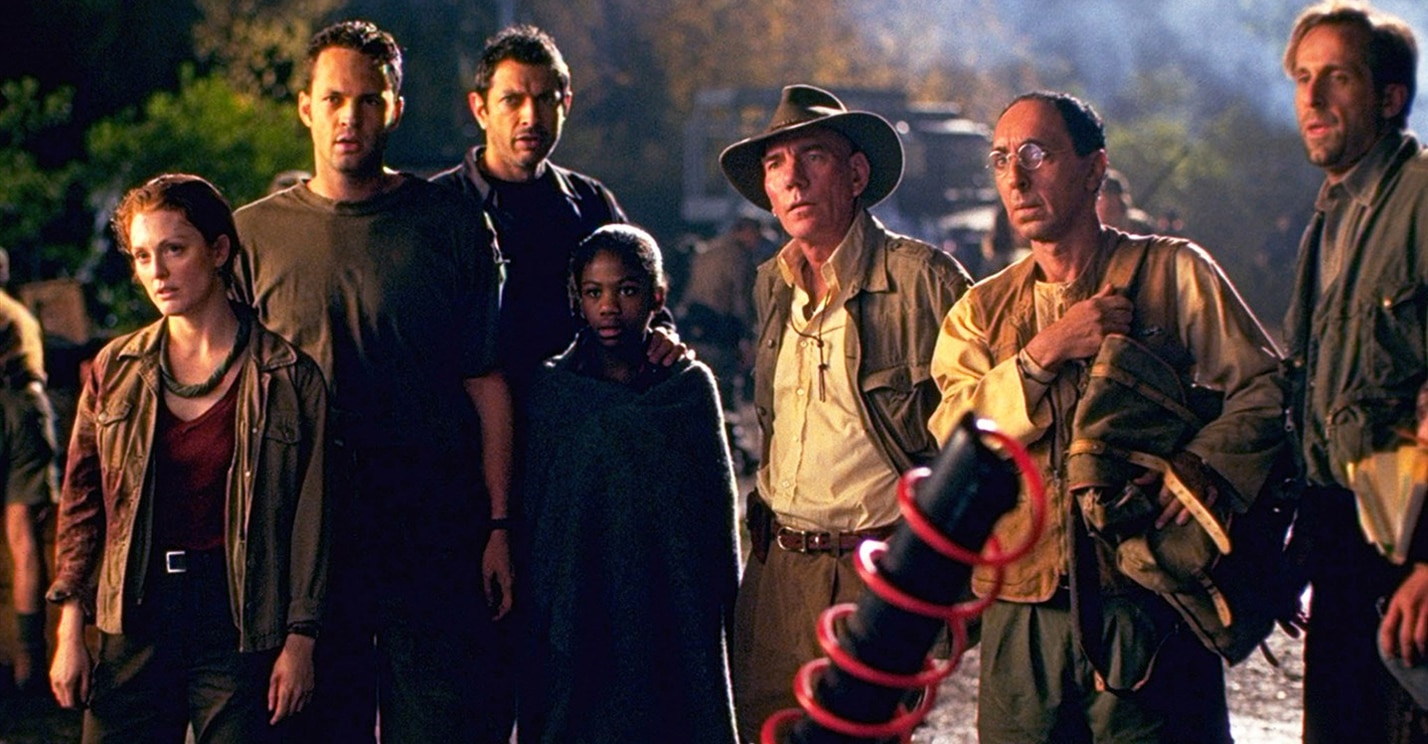
The Lost World is a morbid film. Isla Sorna is part of Las Cinco Muertes, the island chain known as “the Five Deaths.” At one point, a feasting T. Rex turns a waterfall blood red. At another, a stream runs red as Dieter Stark (Peter Stormare) dies screaming. In a sequence lifted from Dracula, an empty cargo vessel drifts into port, its crew dismembered and consumed. In one of the franchise’s best sequences, velociraptors hunt in the tall grass. At one point, Kelly Curtis (Vanessa Lee Chester) impales a velociraptor on a spike, a rare example of a human killing a dinosaur.
The Lost World is a darker film than Jurassic Park, in a literal sense. Roger Ebert observed that “much of the film, especially the action scenes, is shot at night in the rain.” Kevin Thomas noted that Spielberg was collaborating with his cinematographer on Schindler’s List, Janusz Kaminski, complaining that Kaminski gave the movie “a darker look than it needs.” It certainly visually contrasts with the brighter colors of the original Jurassic Park.
There are reasons why Spielberg might have wanted to make a darker film. After all, George Lucas has speculated that the darkness of Temple of Doom was rooted in Lucas’ divorce from his wife Marcia and Spielberg’s break-up with his long-term girlfriend Kathleen Carey. Temple of Doom was also the first movie that Spielberg made after the tragic accident on the set of The Twilight Zone, a movie that Spielberg produced and an accident that “made (him) grow up a little bit more.”
The Lost World was the first movie that Spielberg made after he finally won the Best Director Oscar for his work on Schindler’s List, a movie about the Holocaust. He would follow The Lost World with the slavery drama Amistad and the war epic Saving Private Ryan. “I think it’s Jurassic Park post-Schindler’s List,” stated production designer Rick Carter of The Lost World. “I just don’t think it’s the same Steven Spielberg.” Hindsight supports this argument.
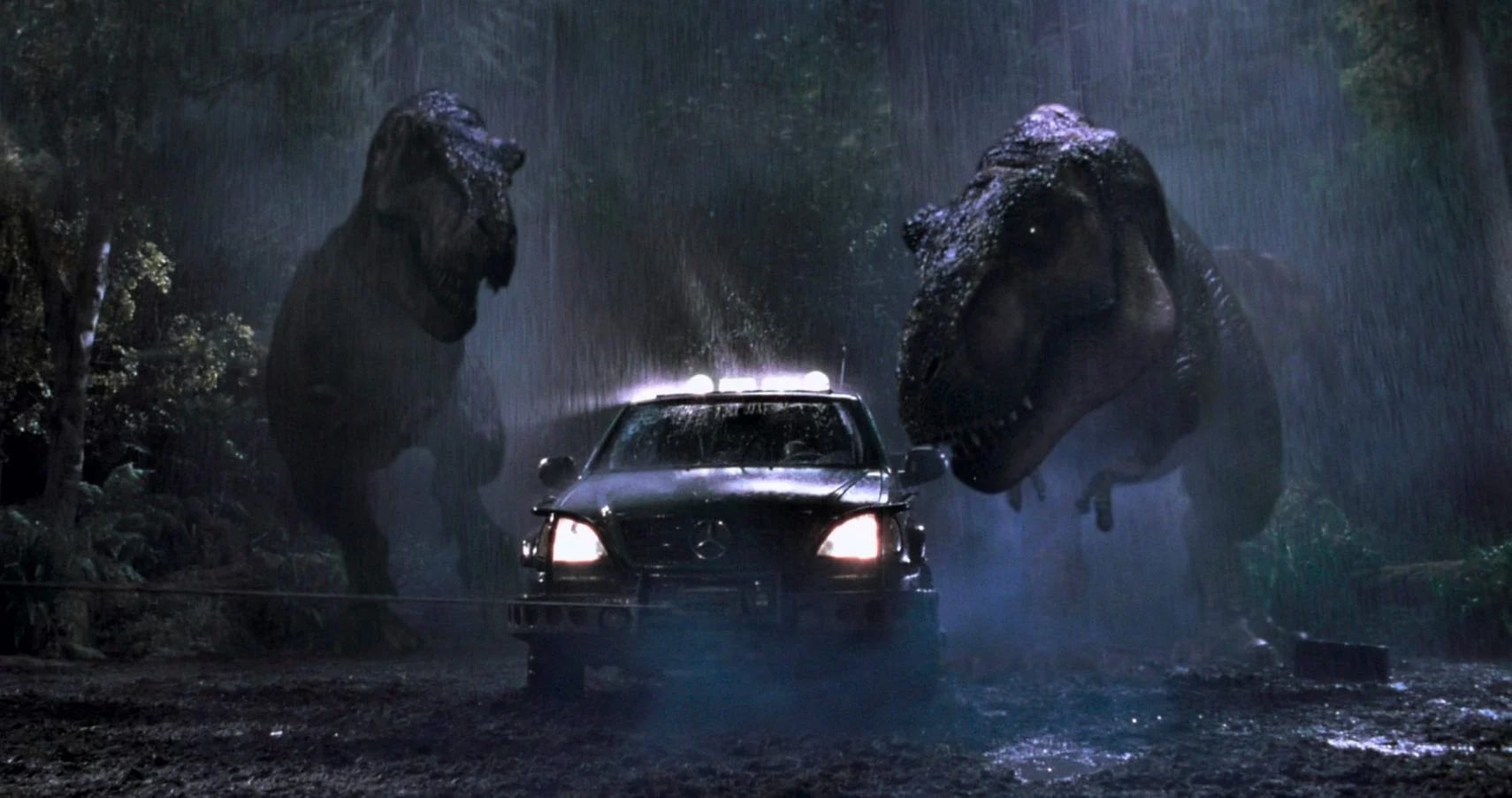
In the years that followed The Lost World, Spielberg’s blockbusters would become a lot darker and more cynical. He would direct movies like War of the Worlds and Munich. It is tempting to blame that shift on 9/11, but A.I. Artificial Intelligence was released before the attacks and Minority Report wrapped filming in July 2001. Spielberg’s filmmaking was in a transitional state when he made The Lost World, and part of that transition involved grappling with the blockbuster genre that he created.
This seems to be the root of the nastiness in The Lost World. If it is possible to read Jurassic Park as a meditation on spectacle and awe, then The Lost World is a response to that. Notably, The Lost World is a film more focused on the mundane and generic, as the wondrous becomes banal. The Lost World reintroduces Ian Malcolm in one of the best transitions of Spielberg’s career: He cuts from a screaming mother on a tropical beach to a yawning Malcolm in front of a tropical billboard.
Even before it properly introduces dinosaurs, the original Jurassic Park features exotic locations like archaeological digs in the jungle or the desert. In contrast, The Lost World reintroduces Malcolm firmly entrenched in the mundane, riding the New York Subway. Even before he reunites with Hammond, Malcolm finds himself haggling with Peter Ludlow (Arliss Howard) over contractual terms. Jurassic Park was a movie about wonder and majesty. Nobody seems happy to be in The Lost World.
Part of the thrill of The Lost World is the incongruity of Jeff Goldblum as a blockbuster leading man, with the combination of Jurassic Park, Independence Day, and The Lost World making him the 1990s answer to Vin Diesel. However, Malcolm lacks the warmth of Grant (Sam Neill) and Sattler (Laura Dern) and seems to resent being put in a sequel. “Don’t worry, I’m not making the same mistakes again,” Hammond vows. Malcolm responds, “No, you’re making… you’re making all new ones.”
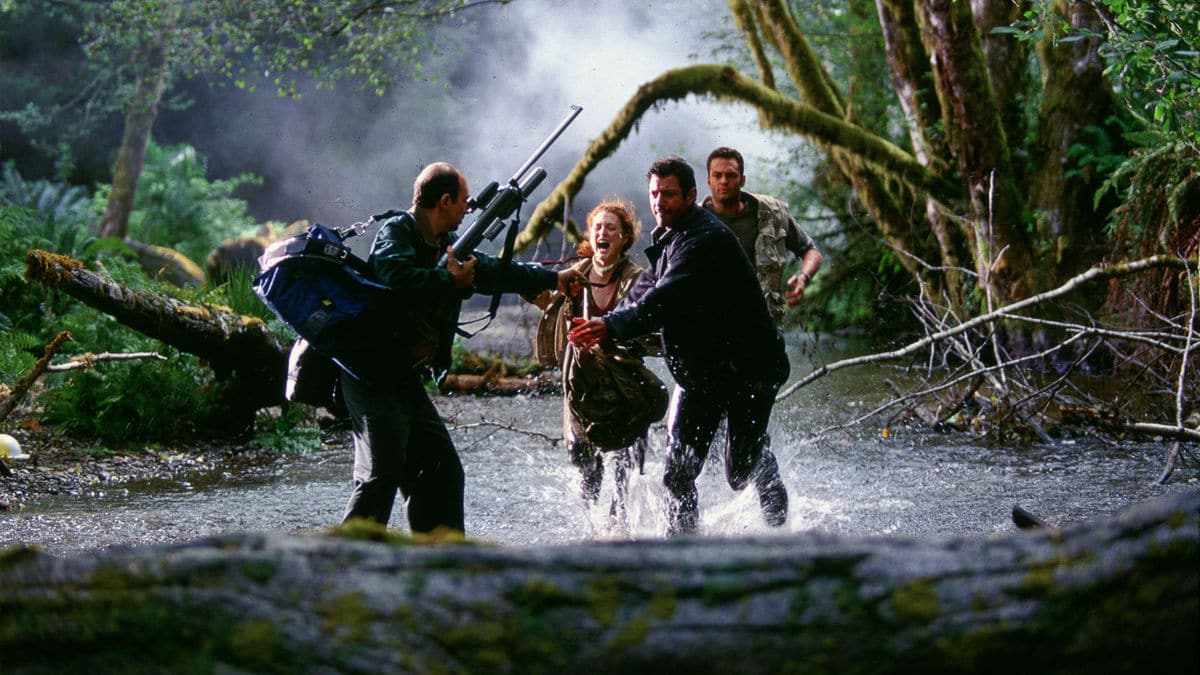
There is a mercenary quality to The Lost World. Hammond is deposed by the board, handing control of the firm to Ludlow. Hammond had his flaws, but at least he was a creative visionary. Ludlow is a soulless executive eager to franchise. Most of the cast of The Lost World are open about their motivations. “In the end, I had to use my checkbook to get them there,” Hammond confesses. “Noble was last year,” photographer Nick Van Owen (Vince Vaughn) tells Malcolm. “This year I’m getting paid.”
If Jurassic Park was about majesty, then The Lost World is knowingly about the soulless escalation of these kinds of movies. As Owen Gleiberman wryly observed in his review, “Midway through The Lost World: Jurassic Park, Steven Spielberg attempts to answer the question, What could be scarier than a Tyrannosaurus rex? The answer: two Tyrannosaurus rexes.” Spielberg is very much in on the joke here, to the point that The Lost World feels like a mocking and subversive take on sequels.
Indeed, early on in The Lost World, Malcolm tours the facilities to inspect the equipment that the team will be taking to the island. Jurassic Park was set at a theme park; this sequence feels like it takes place in a studio backlot. The crew works on the props and the equipment, particularly with an eye to capturing the best shots on film. As Malcolm wanders through the space, he doesn’t pass blueprints so much as concept art. Hammond is not launching a mission; he’s making a sequel.
The obvious response to this would be to point out that much of this subtext carries over to Jurassic World, Colin Trevorrow’s follow-up to the original Jurassic Park. However, even beneath all this cynicism and nastiness, The Lost World is still a Spielberg movie. It features some of the franchise’s best visuals and action scenes. It returns to Spielberg’s thematic preoccupation with fatherhood, this time putting Malcolm in focus and paralleling his arc with that of a T. Rex. It also benefits from Spielberg’s baseline competence.
The Lost World is nowhere near as good as Jurassic Park. However, in allowing Spielberg to indulge his nastier side and in offering a pointed commentary on the grim internal logic of sequel production, it remains a much more compelling and engaging film than any of the four films that followed.

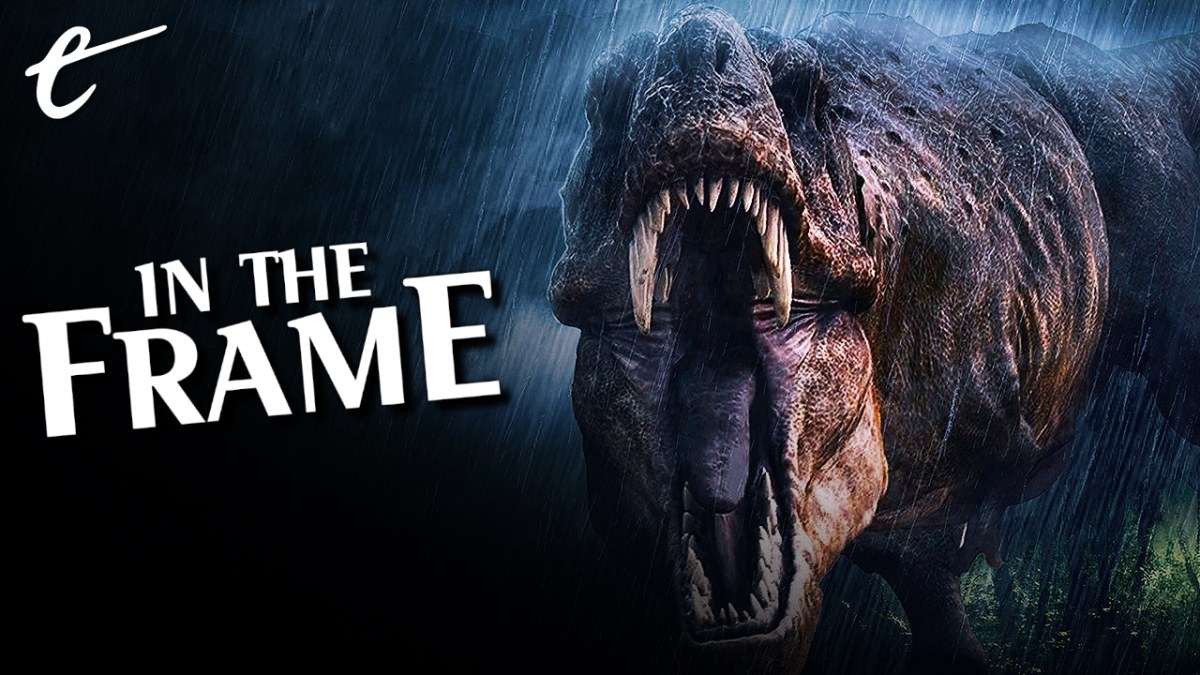




Published: Jun 17, 2022 11:00 am